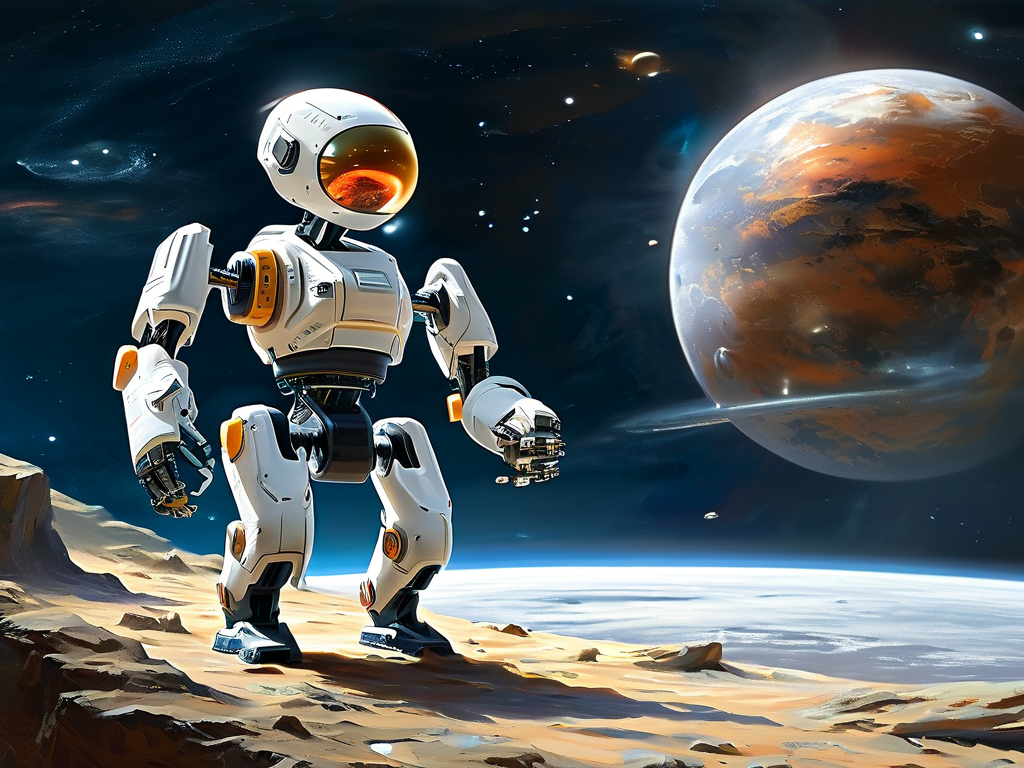Space robotics technology research represents a cutting-edge frontier in modern engineering, driving innovations that enable humanity to explore, maintain, and utilize extraterrestrial environments safely and efficiently. This field merges robotics, artificial intelligence, and aerospace engineering to create systems capable of operating autonomously in the harsh conditions of space, such as microgravity, extreme temperatures, and radiation exposure. Over the past decades, significant strides have been made through international collaborations and missions, positioning space robots as indispensable tools for scientific discovery and operational support beyond Earth's atmosphere. For instance, NASA's Robonaut series exemplifies how humanoid robots can assist astronauts on the International Space Station (ISS) by performing repetitive tasks like maintenance checks, thereby reducing human risk and extending mission durations. Similarly, the European Space Agency's robotic arms, used in satellite servicing, demonstrate precision in capturing and repairing orbiting assets, which minimizes debris and enhances sustainability in low-Earth orbit. These advancements underscore the critical role of robotics in overcoming the limitations of manned spaceflight, where human presence is constrained by physiological vulnerabilities and high costs.

The core research areas in space robotics focus on developing autonomous capabilities that allow robots to navigate, manipulate objects, and make decisions with minimal human intervention. Navigation systems, for example, rely on advanced sensors like LIDAR and computer vision algorithms to map unknown terrains and avoid obstacles in real-time. This is crucial for missions to distant celestial bodies, such as Mars rovers like Perseverance, which autonomously traverse rocky landscapes while conducting experiments. Another key aspect is dexterous manipulation; researchers are refining gripper designs and AI-driven control systems to handle delicate instruments or assemble structures in space. A notable code snippet illustrates this: in Python simulations, engineers test path-planning algorithms using libraries like ROS (Robot Operating System) to optimize trajectories for robotic arms. Such innovations address the challenge of communication delays—up to 20 minutes for Mars signals—by enabling on-board processing that ensures robots respond swiftly to unforeseen events without ground control input. Additionally, machine learning models are being trained on vast datasets from past missions to predict failures and adapt behaviors, enhancing reliability in unpredictable environments like lunar dust storms or asteroid surfaces.
Applications of space robotics extend beyond exploration to commercial and defense sectors, where they offer economic and strategic benefits. In satellite operations, robotic systems deploy, inspect, and refuel satellites, prolonging their lifespans and reducing launch frequency, which cuts costs and environmental impacts. Companies like SpaceX integrate robotic technologies into their Starship programs for automated payload handling, aiming to establish lunar bases or Mars colonies. Military applications include surveillance drones that monitor space debris or potential threats, leveraging AI for threat assessment without endangering personnel. On the ISS, robots like Canada's Canadarm2 perform critical tasks such as docking cargo ships, showcasing how human-robot collaboration can increase efficiency and safety. These real-world implementations highlight the technology's versatility, but they also reveal persistent challenges. Radiation hardening is essential to protect electronic components from cosmic rays, requiring materials research into shielding alloys. Power constraints demand efficient energy sources, such as solar panels or radioisotope thermoelectric generators, to sustain long-duration missions. Moreover, the high cost of development and testing—often exceeding billions per project—necessitates international partnerships to pool resources and share risks, as seen in joint ESA-NASA initiatives.
Looking ahead, the future of space robotics research promises transformative breakthroughs driven by emerging technologies. Quantum computing could revolutionize navigation by processing complex calculations faster, enabling robots to explore deeper space regions like the asteroid belt. Advances in AI, particularly deep reinforcement learning, will foster greater autonomy, allowing robots to learn from experiences and collaborate in swarms for large-scale construction projects, such as building habitats on the Moon. Ethical considerations, like minimizing space debris and ensuring peaceful use, must guide policy frameworks to prevent conflicts. Ultimately, as private firms like Blue Origin accelerate innovation, space robotics will democratize access to space, fostering a new era of discovery. In , ongoing research in this field not only propels human ambitions for interplanetary habitation but also yields spin-off technologies that benefit Earth, such as improved medical robotics or disaster response systems, cementing its vital role in our cosmic journey.



